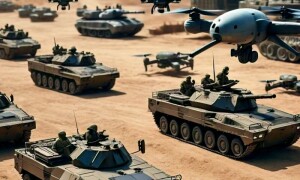KARACHI: A study of the first three months of the current year has shown that Sindh dominates the national scene in sectarian violence with 93 of the total 101 people having fallen prey to the menace across the country.
“The province had the highest number of casualties from sectarian violence during this period [Jan-March] followed by Khyber Pakhtunkhwa, Balochistan, and Punjab,” said the first quarterly report prepared by the Centre for Research and Security Studies (CRSS), a think tank.
It said that during the same period last year, 79 people were killed in sectarian violence. This year, the number had jumped to 101 in the first quarter — more than 25 per cent increase.
“Also bear in mind that several incidents of potential attacks were also reported that caused no casualties, such as finding and defusing a bomb next to an Imambargah wall in Karachi,” said the report.
In Sindh, said the report, the suicide attack at the shrine of Lal Shahbaz Qalandar was one of the most fatal attacks of the year that left 91 people dead and 150 injured.
In Karachi, it added, two persons from Shia community became the victims of targeted killing in Nazimabad and Gulshan. Thus, the report said, 93 people were killed and 150 were injured in Sindh and the remaining eight in other three provinces totalling 101 casualties in the country.
In Balochistan, two persons from Shia Hazara community in Quetta and a Hindu trader in Qilla Abdullah were killed in the incidents of targeted killing.
In Khyber Pakhtunkhwa, a Sunni teacher of a seminary was found dead in Chamkani, Peshawar, and three persons from Shia community were gunned down in Prawa tehsil of Dera Ismail Khan.
Punjab had a single casualty recorded when a prominent local leader of the Ahmadi community and a relative of Nobel Laureate Abdus Salam was gunned down in Nankana Sahib.
In Azad Jammu and Kashmir, a Shia scholar Allama Tasawar Jawadi and his wife were attacked by unknown assailants leaving them critically injured.
The report said that three militant outfits claimed responsibility for most of the sectarian attacks in the country.
“Daesh [militant Islamic State group] claimed the suicide attack at the shrine of Lal Shahbaz Qalandar while the Lashkar-i-Jhangvi Al-Aalmi claimed responsibility for the targeted killing of two persons from Shia Hazara community in Quetta,” said the report, adding that after staying dormant for more than a year, the Lashkar-i-Jhangvi claimed responsibility for the targeted killing of an Ahmadi community leader in Nankana Sahib.
“The largest numbers of victims of sectarian violence during this quarter were Sufi devotees [91] followed by the adherents of the Shia sect [five],” said the report.
It said in the last quarter [of last year], the Sufi devotees had the highest number of fatalities as well.
“Daesh has made its presence known by claiming two suicide attacks within last six months,” said the report, adding that while the ongoing operation against Daesh in Syria and Iraq was reclaiming territory, the appearance of IS, or IS affiliates in Pakistan was a matter of great concern.
“Reports indicate that militants from the Tehreek-i-Taliban Pakistan and other proscribed outfits are now shifting their loyalties and joining Daesh. If the trend continues, it may transform the scenario of militancy in the country,” it warned.
Instead of choosing urban centres for violence as has been the case in the past by other militant outfits, said the report, IS has begun attacking the less-guarded, less-settled areas, reflecting a new strategy.
“It raises questions about the efficacy and effectiveness of the security operations that had been carried out thus far.
However, it must be said that after the sudden upsurge in violence in February, we did not see similar coordinated strike in a concentrated period of time again.”
The CRSS report concluded that sectarian violence had assumed more prominence in the country now. The suicide attacks at Sufi shrines have resulted in the deaths of attendees that belong to multiple identities.
“The civil and military leadership needs to review their policies and strategies to come up with a better understanding of what they have missed in their resolve to wipe out militancy from the country, particularly in the sectarian sphere,” it said.
Published in Dawn, May 18th, 2017













































Dear visitor, the comments section is undergoing an overhaul and will return soon.